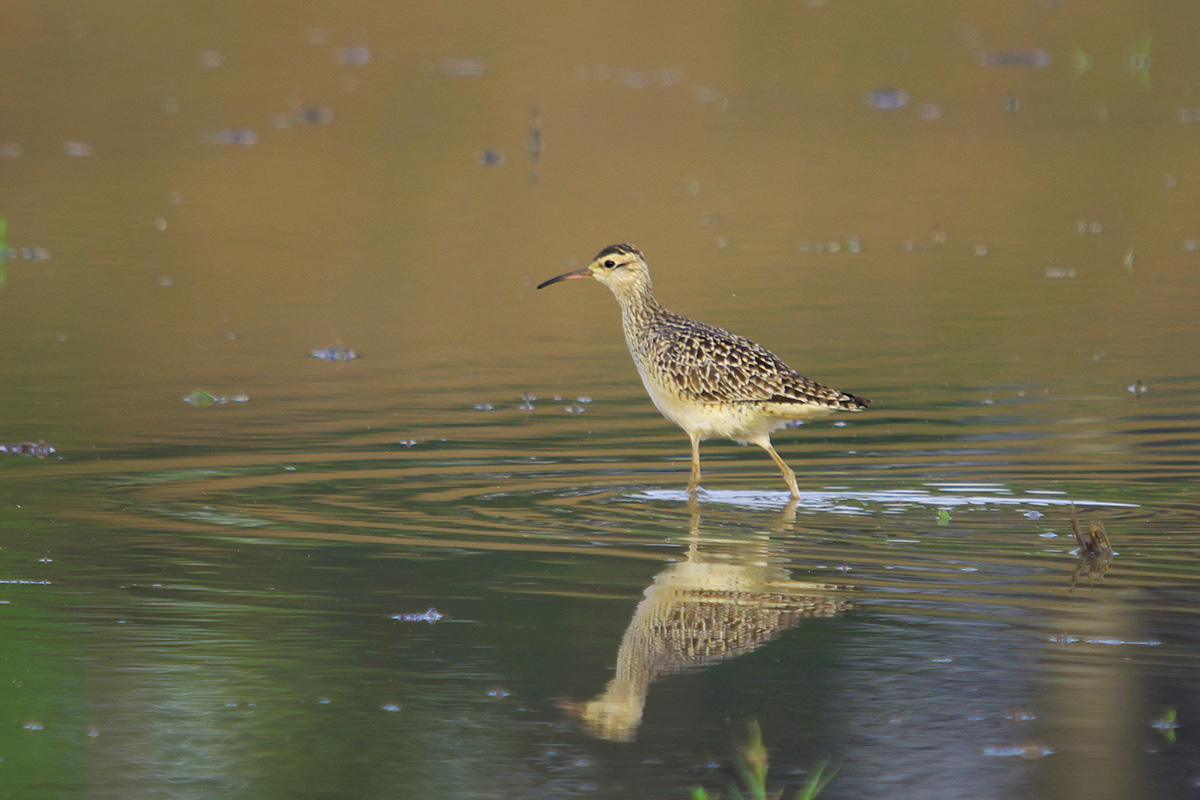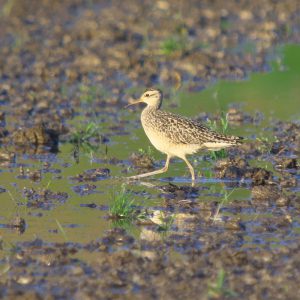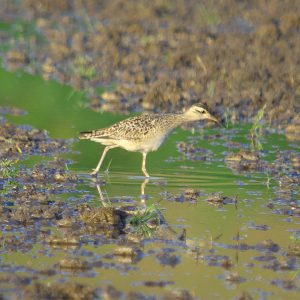むなかたが集まる
電子データベース
電子データベース
コシャクシギ

| 種目 | コシャクシギ (小杓鷸) | 分類 |
チドリ目 シギ科 ダイシャクシギ属 |
学名 | Numenius minutas | 英名 | Littke Curlew |
|---|---|---|---|---|---|---|---|
|
コシャクシギ (小杓鷸) |
チドリ目 シギ科 ダイシャクシギ属 |
Numenius minutas | Littke Curlew |
宗像市でみられる場所・時期
宗像では旅鳥で,春秋の渡りの時期に見ることができる。特に,秋よりも春に観察機会が多く,田植え前後の水田で稀に観察できる。
特徴
全長約30㎝である。雌雄同色である。
全体にバフ色で,上面は黒褐色の軸斑にくさび模様などの淡黄色の羽縁がある。黒褐色の過眼線は,眼先では不明瞭で淡い色となる。頸が細く,頭部と眼が大きめに見える。体下面は白っぽい。
夏羽と冬羽での際はあまりない。
黒い嘴は細くて短く,先がわずかに下に曲がる。下嘴基部は肉色で足は淡い肉色となる。
幼鳥では上面の軸斑がより黒っぽく,羽縁の模様がはっきり年,三列風切などはくさび形の模様が明瞭である。足は灰肉色である。
習性
農耕地,荒れ地,草地,水田などで観察できる。海水域に入ることは少なく,ほとんどが淡水域で,草地などを歩きながら蜂やバッタなどの昆虫類を補食する。
分布
数少ない旅鳥として農耕地や草地に飛来する。西日本では数十羽の群れとなることもある(宗像では単独のことが多い。)。
その他
嘴が大きく曲がったシギとして,コシャクシギ,チュウシャクシギ,ダイシャクシギ,ホウロクシギがあるが,淡水域で見かけるのは,コシャクシギとチュウシャクシギであることが多い。チュウシャクシギとは嘴の長さ,大きさで識別できる。
 はじめに
はじめに お問い合わせ
お問い合わせ
